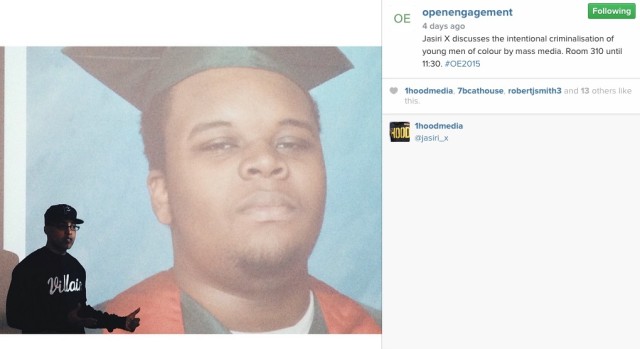I’m an art critic; I don’t often get asked about how I’m working toward revolution. Looking around the city’s museums and galleries, it’s hard to figure out how optically pleasant paintings enact social change. Outside the galleries, there’s activist groups like Occupy Museums or W.A.G.E. that nod to revolution by targeting institutions. Either way, the focus remains on art and art institutions, which can leave the soul feeling empty; I desire a more all-encompassing ethics, one that I can take with me after-hours, outside the Art F City offices and the galleries where I tread.
All that changes when you talk to someone who’s involved with social practice; revolution, is a topic you get asked about repeatedly at Open Engagement. Though the conference can feel like a nerdy social mixer for 1,000-plus 30-somethings with bad shoes (see my rundown of the weekend), there’s benefits to being around artists, educators, and others who find activism in ways that go beyond traditional models of protest.
Job creation was a big topic at the conference. Transformazium, a collective partnered with the Braddock Carnegie Library Association, has funded full-time staff positions for people who live within the library district, but might not have gone to art school. Jonathan Reyes, who had been formerly incarcerated, got one of those jobs, and spoke on a panel about how he got from public housing to his community-outreach position at the library. On another panel, we heard from artist Reanne Estrada of Public Matters, a consulting organization that provides public health education—and jobs—through “market makeovers” at corner stores in Los Angeles.
Compare the aim of job creation to that of fleeting educational enlightenment, and the Gramsci Monument sounds like a summer babysitting gig.
While the number of actual jobs created might be slight, at least there was talk about wanting to do something new, or different, rather than continuing on with our current institutional models. When an eye was turned toward the art sector, the nonprofit-funding model was discussed as inefficient. It’s not that there’s a shortage of funding to go around—which is sometimes the cry here in New York—it’s that artists and administrators spend so much time focused on fundraising, patronage, and finding appropriate projects to fit within the “exhibition” or “K-12 education or programs” model that it’s hard for their organizations to actually do good. Other revenue streams were discussed: Conflict Kitchen, a Pittsburgh-based walk-up restaurant that serves food themed around traditional meals from countries in “conflict” with the U.S., ends up getting 95-percent of its revenue from food sales.
At Open Engagement, politics weren’t always talked about on a macro level; tiny, personal revolutions are valuable, too. “Listening” was one of the more popular words dropped at the conference, as in “I use listening as a way to enact change on an everyday level.” Finding meaning doesn’t always require projects on a grand scale. And it’s just good to hear from critics like James McAnally, of Temporary Art Review in St. Louis, who’s blogged about being arrested during a Ferguson protest. (It’s part of your life, it can be part of your writing practice, too. A revolution doesn’t always need to have an Art-Angle.)
Having said that, the conference has its flaws. There could be more art projects. The talks could be organized better. There were too many feel-good-about-yourself workshops. For an uptight, detail-loving person like myself, I wanted to get more research and history out of the talks—more often than not, speakers were too off the cuff. Some participants seemed out of touch—like the college educator who was worried about right-leaning students trying to use social-practice art for evil.
At times, the conference attendees suffered from such myopic vision, that they were often unaware of the online discourse surrounding the subjects they study. When one conference panelist casually mentioned that the Gramsci Monument hadn’t had much coverage, I brought up how Whitney Kimball, formerly an editor with Art F City, had interviewed those living in the housing project during the installation, and one year after its close—her article was also featured on the blog for social-practice grantor a blade of grass. Nobody mentioned any digital-activist projects, of which there are plenty, including Deep Lab, Addie Wagenknecht’s hacktivism research group, which had a residency at Carnegie Mellon University’s STUDIO for Creative Inquiry in 2014. (Several Open Engagement panels were held in the STUDIO.) And yes, being surrounded by a thousand other people, there was a sense that bigger goals could be achieved than an occasional talk or lecture that brought forth some clarity.
That cast a kind of casual/hippie vibe on the conference, but if you can get past that, it’s humbling to see other art worlds in action. If we are to improve—and find a revolution—we need to start listening, and paying attention to all the art worlds, beyond New York, on the Internet, and right here in Brooklyn.



{ 1 comment }
he a good boy, he din do nuffin
Comments on this entry are closed.
{ 1 trackback }